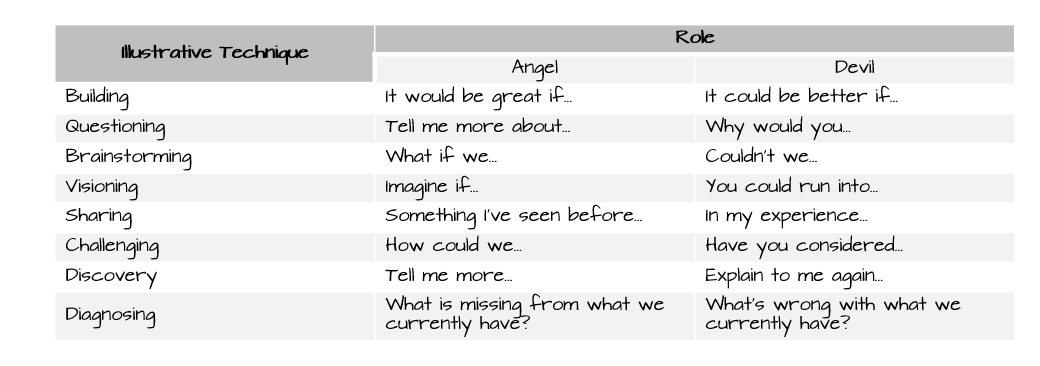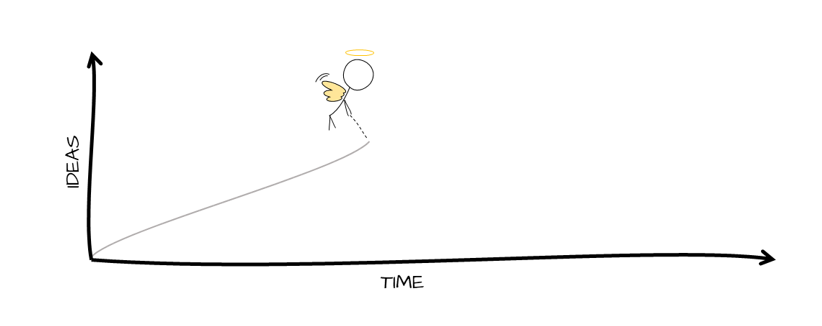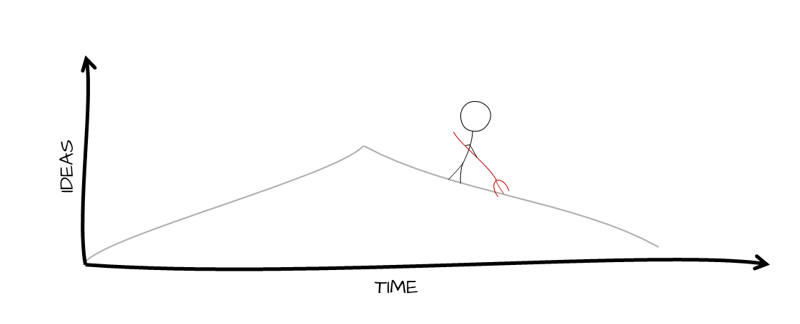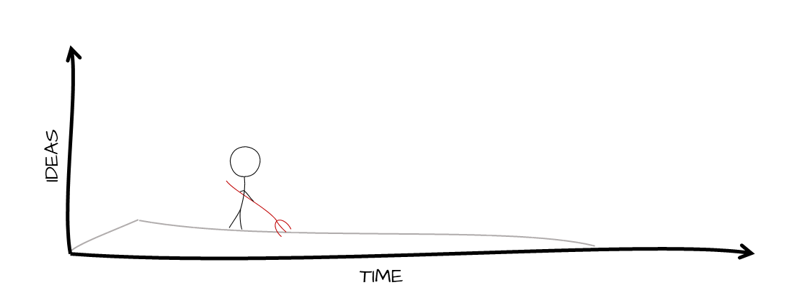Save a shoulder for Angel’s Advocates
Disclaimer: This piece uses phrases that have obvious religious links. Please don’t read into it. The author chose to retain these phrases to allow the idea to be conveyed as simply as possible. The illustrator chose to lean into it…
In the business world there seems to be no shortage of devil’s advocates.
Before an idea has a chance to live there are points of view that counter and suppress it.
There is nothing inherently wrong with playing devil’s advocate; it’s a matter of timing.
What we often forget is the important role that’s required to help ideas get off the ground in the first place. This role I dub the Angel’s Advocate.
The two of these roles together, used at appropriate times, lead to better outcomes for teams.
How to use Devil’s and Angel’s Advocates
Angel and Devil's advocates are two sides of the same coin. Both are trying to help, and they often deploy the same techniques.
Within a meeting, both roles react and push ideas with the goal of improving meeting outputs.
What differentiates them is the framing.
Let’s break down the typical techniques to illustrate this point.
The tools deployed by both roles don’t differ fundamentally, but a change in framing can make a difference in whether the idea gets to grow or starts to shrink.
The key to knowing which shoulder to listen to depends on where you are in the ideation process.
Early into a brainstorm is an angels-only event. The goal should be increasing the breadth of ideas to create a larger set of options to draw upon.
Once the ideation has been exhausted, it is time for the devil’s advocate to get to work.
The purpose of this role, is to cull the ideas down to the few worthy of execution.
If the devil’s advocate is brought out early, it limits the potential opportunities for consideration.
This increases the risk of the final output, as the chosen idea will be drawn from a smaller sample size.
Conversely, if the angel’s advocate sticks around too long, the number of ideas still in consideration make it impossible to prioritize and execute.
How to Put This Into Practice
Knowing the role of the two advocates is one thing, putting them in practice is another.
To help make sure you get the most out of these roles, consider the three tips below:
This will help everyone understand which mindset to bring and give the team permission to flag when others aren’t playing the right role.
Most of the time we play the wrong role it’s unconscious. Actively listen to the words you choose; it will help you recognize tendencies you may not know you have.
Give permission to the group to nudge you if you accidentally drift into the wrong mindset. It can be easy to fall into your ‘natural’ role, and sometimes we need help catching ourselves.
Want to practice playing Angel’s or Devil’s advocate right now? Options below!



















